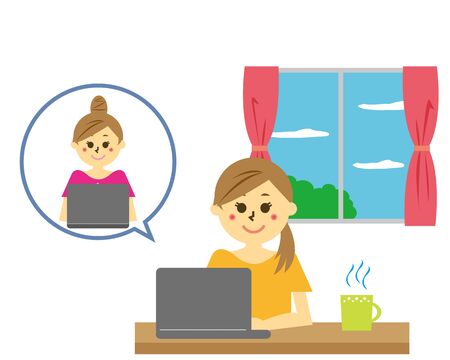1. Understanding the Stigma Surrounding Mental Health in the American Workplace
Mental health is a crucial aspect of overall well-being, but talking about it openly at work can be challenging for many Americans. Even though awareness has grown in recent years, stigma and misconceptions still create barriers that make employees hesitant to discuss their mental health needs.
Common Misconceptions About Mental Health at Work
| Misconception | Reality |
|---|---|
| Mental health issues are a sign of weakness. | Mental health concerns can affect anyone, regardless of strength or character. |
| Talking about mental health will harm your career. | Many companies value open communication and want to support their employees well-being. |
| Only people with severe problems need help. | Mental health is a spectrum; even mild stress or anxiety deserves attention and support. |
Cultural Barriers in American Workplaces
The “pull yourself up by your bootstraps” mentality is deeply rooted in American culture. This mindset often discourages individuals from seeking help, as they may fear being judged or seen as unable to handle their responsibilities. Additionally, some workplaces maintain a culture of silence around personal struggles, prioritizing productivity over well-being.
Other Factors That Inhibit Open Discussions:
- Lack of Awareness: Many employees and managers lack training on how to recognize and address mental health issues.
- Fear of Discrimination: Employees may worry that disclosing a mental health issue will lead to negative treatment or missed opportunities for advancement.
- Privacy Concerns: There is uncertainty about how much personal information to share and who will have access to it within the organization.
How These Barriers Affect Employees
The result of these misconceptions and barriers is that many workers suffer in silence. They may avoid seeking help, leading to increased stress, lower productivity, and higher turnover rates. By understanding these challenges, American workplaces can begin to create an environment where conversations about mental health are welcomed and supported.
2. The Business Case for Prioritizing Mental Health Conversations
Why Mental Health Matters in the American Workplace
Mental health has a huge impact on workplace culture and business outcomes. In today’s fast-paced work environments, employees face many pressures that can affect their well-being. When organizations create open spaces for mental health conversations, they not only support their team but also gain real business benefits.
The Benefits of Transparent Dialogue
Honest discussions about mental health reduce stigma and show employees they are valued. This transparency helps build trust, encourages people to ask for help when needed, and creates a more inclusive environment. Employees who feel supported are more likely to stay with the company, feel engaged, and do their best work.
Impact on Retention and Productivity
| Benefit | Description |
|---|---|
| Employee Retention | When staff know their well-being is a priority, they’re more loyal and less likely to leave for other opportunities. |
| Productivity Boost | Open communication helps employees manage stress and focus better, leading to higher job performance. |
| Reduced Absenteeism | Employees who feel supported are less likely to take frequent sick days or time off due to stress-related issues. |
Organizational Reputation
Companies that prioritize mental health attract top talent. Job seekers look for workplaces where they feel safe and respected. By breaking the stigma and promoting open conversations, organizations build a positive reputation both inside and outside the office.

3. Building a Supportive Environment through Leadership and Policy
The Power of Leadership in Shaping Culture
Leaders set the tone for how mental health is viewed in the workplace. When company leaders openly discuss mental health, share their own experiences, or simply acknowledge the importance of mental well-being, it signals to employees that these conversations are both safe and valued. Authentic leadership helps break down stigma, making it easier for everyone to speak up if they need support.
Key Ways Leaders Can Foster Openness
| Action | Impact |
|---|---|
| Openly discuss mental health topics | Normalizes conversations and reduces stigma |
| Share personal experiences (when comfortable) | Builds trust and shows vulnerability is okay |
| Encourage feedback and listening sessions | Makes employees feel heard and valued |
| Recognize and reward supportive behaviors | Reinforces positive workplace culture |
The Importance of Mental Health Policies
Mental health policies are more than just documents—they show that your organization takes mental wellness seriously. Clear policies provide guidelines on available resources, time off for mental health needs, anti-discrimination protections, and access to Employee Assistance Programs (EAPs). These policies should be easy to understand and communicated regularly so every employee knows their rights and options.
Essential Elements of a Good Mental Health Policy
- Confidentiality of employee disclosures
- Flexible work arrangements for mental health reasons
- Access to counseling or support hotlines (such as EAPs)
- No tolerance for discrimination based on mental health status
- Clear process for requesting accommodations or leave
The Role of Manager Training in Supporting Teams
Managers are often the first point of contact when an employee struggles. Proper training helps managers recognize early warning signs, respond with empathy, and connect team members to appropriate resources. This doesn’t mean managers need to be therapists—just that they know how to listen without judgment and guide employees toward help when needed.
Manager Training Topics That Make a Difference:
- Mental health awareness and reducing stigma
- How to start supportive conversations with team members
- Recognizing stress or burnout signals in others
- Guidelines for privacy and confidentiality
- Connecting employees to internal or external resources (like EAPs)
A strong commitment from leadership, clear policies, and well-trained managers together create a workplace where mental health conversations can happen openly. By taking these steps, American workplaces can ensure that everyone feels supported—no matter what they’re facing.
4. Practical Strategies to Encourage Open Dialogue
Peer Support Programs
One of the most effective ways to break the stigma around mental health at work is by establishing peer support programs. These programs train employees to act as mental health allies, offering a safe and relatable space for coworkers to share their concerns. When employees know they have someone at their level who understands their challenges, theyre more likely to open up about mental health issues. Consider setting up regular check-ins or peer-led groups where people can talk freely without fear of judgment.
Workshops and Awareness Training
Hosting workshops and training sessions on mental health topics helps educate everyone in the workplace, from entry-level staff to management. These sessions can cover topics like recognizing stress, building resilience, and supporting coworkers going through tough times. Bringing in mental health professionals or guest speakers with lived experience makes these workshops even more impactful. Here’s a simple table showing some common workshop ideas:
| Workshop Topic | Purpose | Frequency Suggestion |
|---|---|---|
| Mental Health 101 | Raise awareness and reduce stigma | Quarterly |
| Stress Management Techniques | Teach practical coping skills | Monthly |
| How to Support a Coworker | Encourage empathy and peer support | Semi-annually |
| Manager Training on Mental Health | Equip leaders with supportive tools | Annually |
Inclusive Communication Channels
An open culture starts with easy, inclusive ways for everyone to communicate. Offer different channels for discussing mental health—some employees may prefer private one-on-one conversations, while others might like anonymous suggestion boxes or digital platforms. Make sure information about mental health resources is visible in places like company intranets, newsletters, or breakroom posters. This shows that talking about mental well-being is not only accepted but encouraged.
Tips for Inclusive Communication:
- Create anonymous feedback options: Employees can submit questions or concerns without revealing their identity.
- Diversify communication formats: Use meetings, emails, posters, and online platforms to reach everyone.
- Open-door policies: Managers should regularly remind staff that they are available for confidential discussions.
- Cultural sensitivity: Make sure materials reflect diverse backgrounds and experiences common in American workplaces.
The Role of Leadership in Fostering Openness
Leaders set the tone for workplace culture. When managers and executives talk openly about their own mental wellness journeys or encourage participation in mental health activities, it signals to all employees that its okay to prioritize mental well-being. Regularly recognizing Mental Health Awareness Month or World Mental Health Day with special events can further normalize these conversations across the organization.
5. Resources and Next Steps for Sustained Change
Utilizing U.S.-Based Mental Health Resources
Making progress in breaking the stigma around mental health at work means using the right resources that fit your teams needs. In the United States, there are many organizations and hotlines available for both employees and employers. These resources offer support, education, and crisis intervention. Here are some valuable options:
| Resource | Description | Contact/Website |
|---|---|---|
| National Alliance on Mental Illness (NAMI) | Education, support groups, and advocacy for mental health. | nami.org |
| Mental Health America (MHA) | Screening tools, information, and workplace programs. | mhanational.org |
| 988 Suicide & Crisis Lifeline | 24/7 free and confidential support for people in distress. | Call or text 988 988lifeline.org |
| Substance Abuse and Mental Health Services Administration (SAMHSA) | Treatment referrals, educational materials, and helplines. | samhsa.gov |
Maximizing Employee Assistance Programs (EAPs)
Employee Assistance Programs are a powerful tool in supporting mental health at work. EAPs typically provide confidential counseling, referrals to local professionals, and wellness resources. To get the most out of your EAP:
- Promote Awareness: Regularly remind employees about the EAP and its benefits through emails, posters, or meetings.
- Simplify Access: Make sure contact information is easy to find and use—such as on your company intranet or HR platform.
- Gather Feedback: Ask employees what they need from the program and adjust offerings based on their input.
- Train Managers: Equip leaders to recognize signs of stress and refer team members to EAP resources.
Building Community Partnerships
Connecting with local mental health organizations can help keep conversations about well-being going strong. Community partnerships can provide guest speakers, workshops, or even on-site counseling days. Here’s how you can start:
- Reach Out: Contact local non-profits or clinics that specialize in mental health services.
- Create Events: Host mental health awareness days with community experts sharing tips or stories.
- Sponsor Initiatives: Support fundraising walks or volunteer opportunities related to mental wellness.
- Share Information: Distribute flyers or digital content from community partners to educate employees.
Sustaining Progress in De-Stigmatizing Mental Health
The journey doesn’t end after one workshop or awareness campaign. It’s important to keep conversations going all year long by scheduling regular check-ins, updating resource lists, and celebrating milestones such as World Mental Health Day. By combining national resources, strong EAPs, and local partnerships, American workplaces can build an environment where everyone feels safe talking about mental health—and getting the support they deserve.


